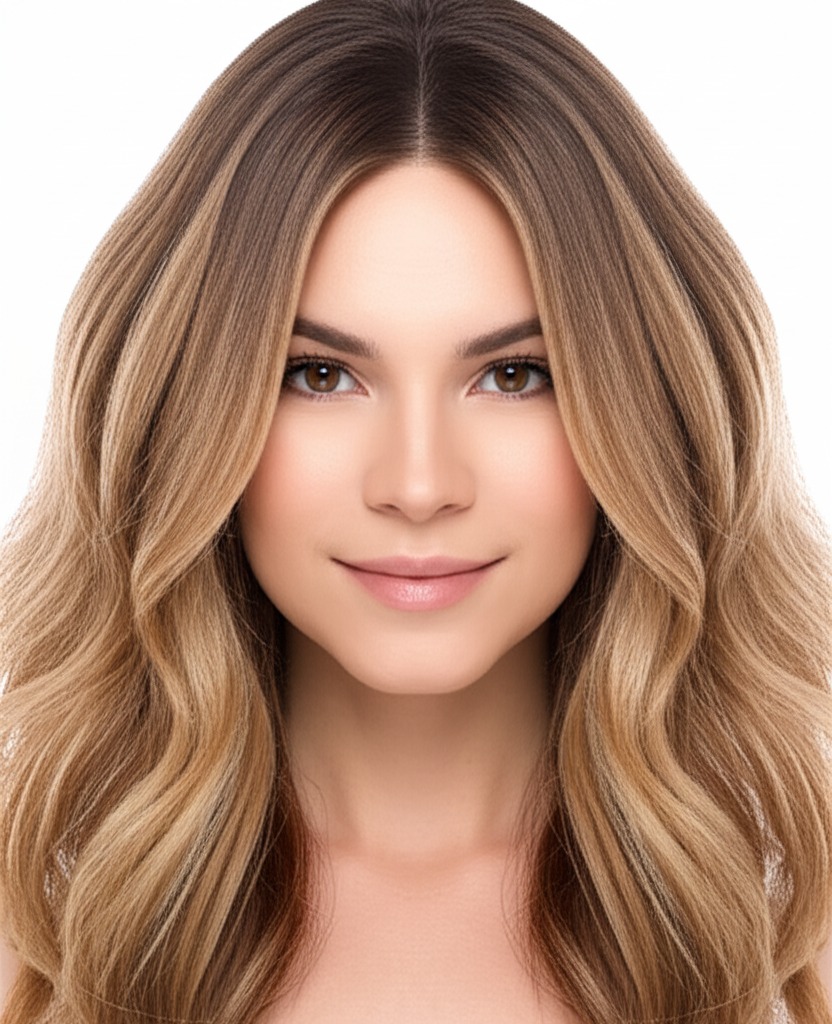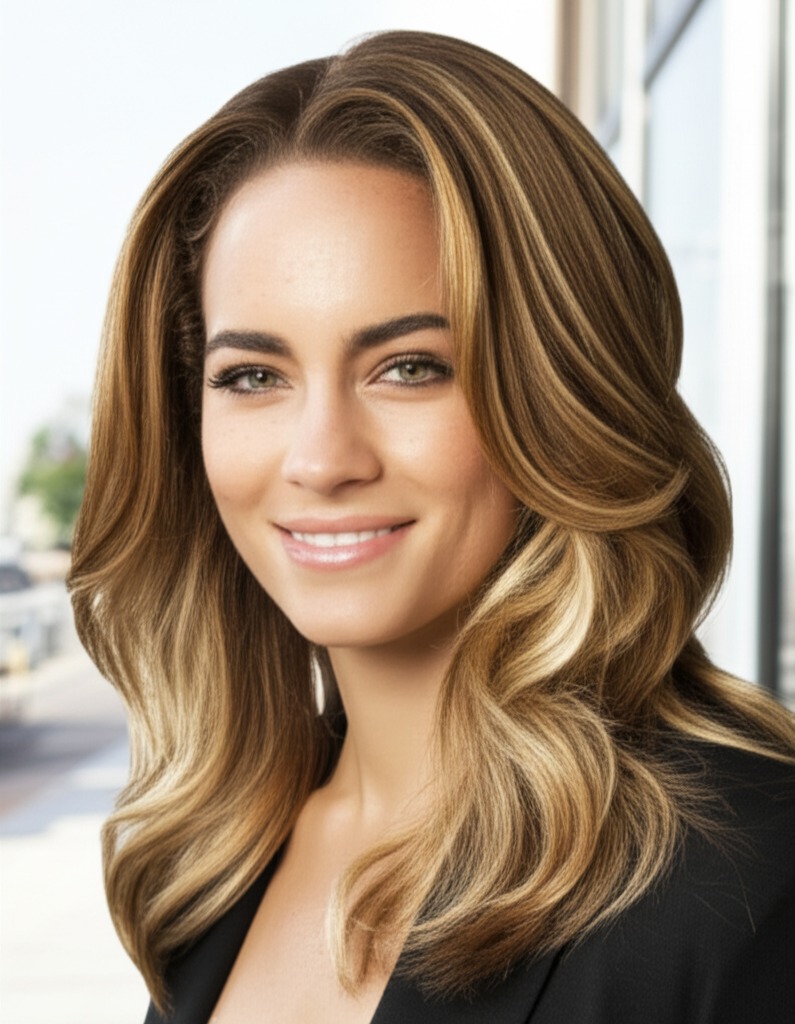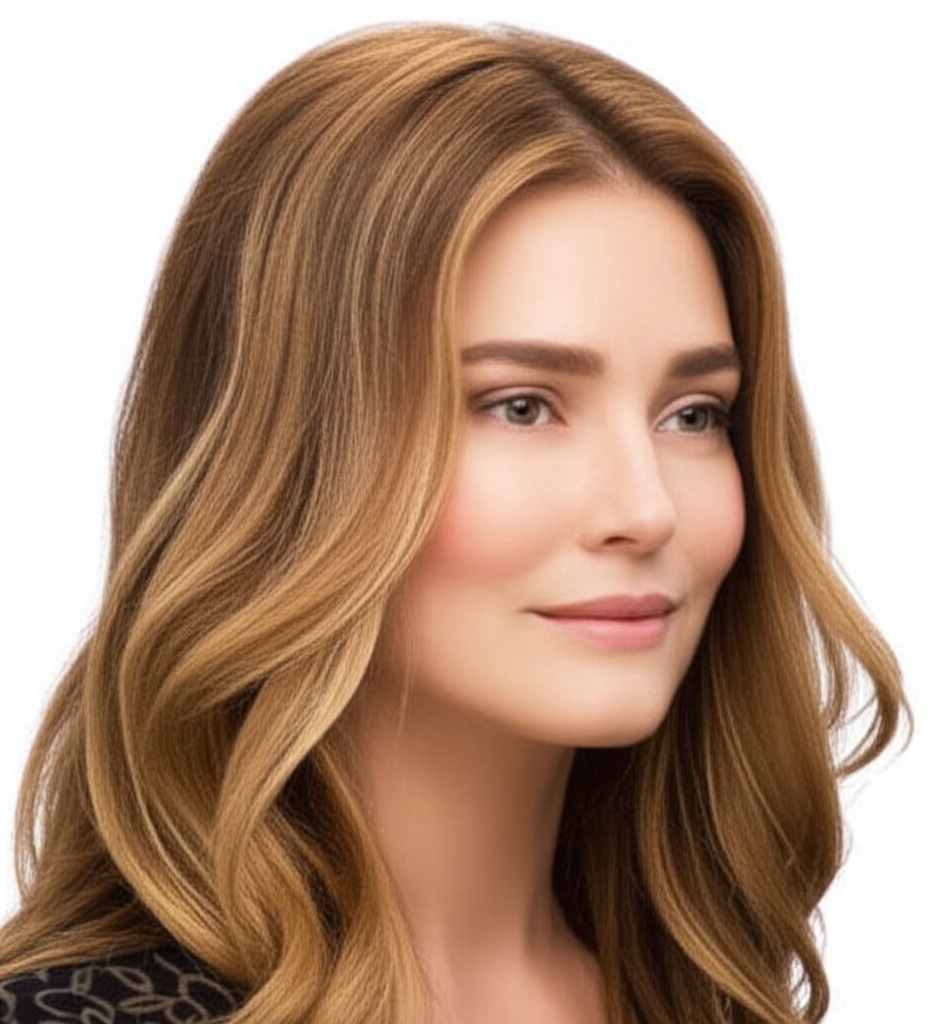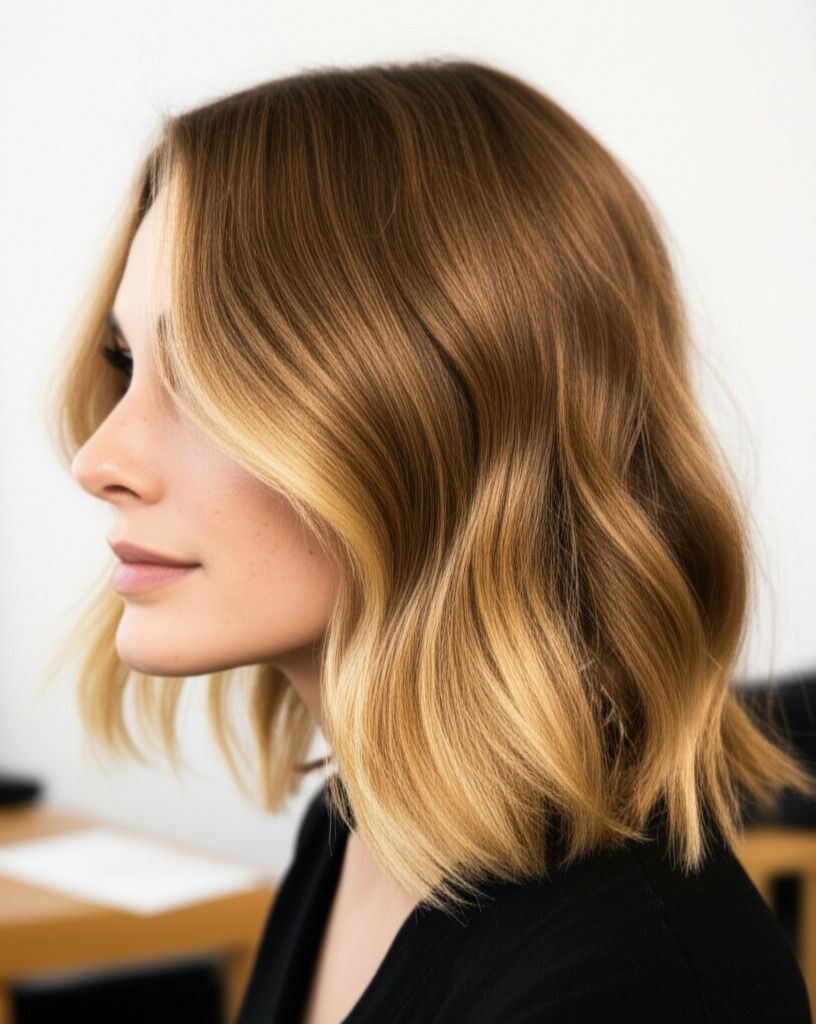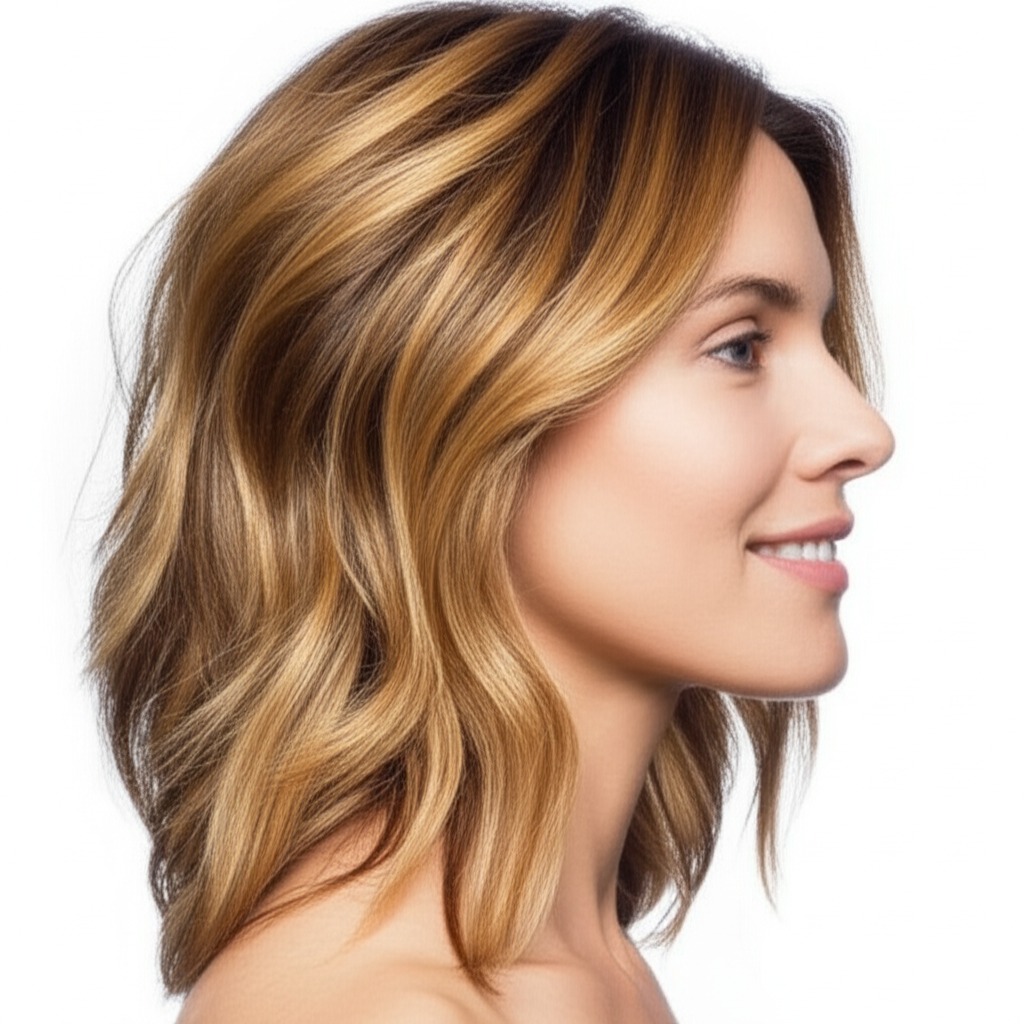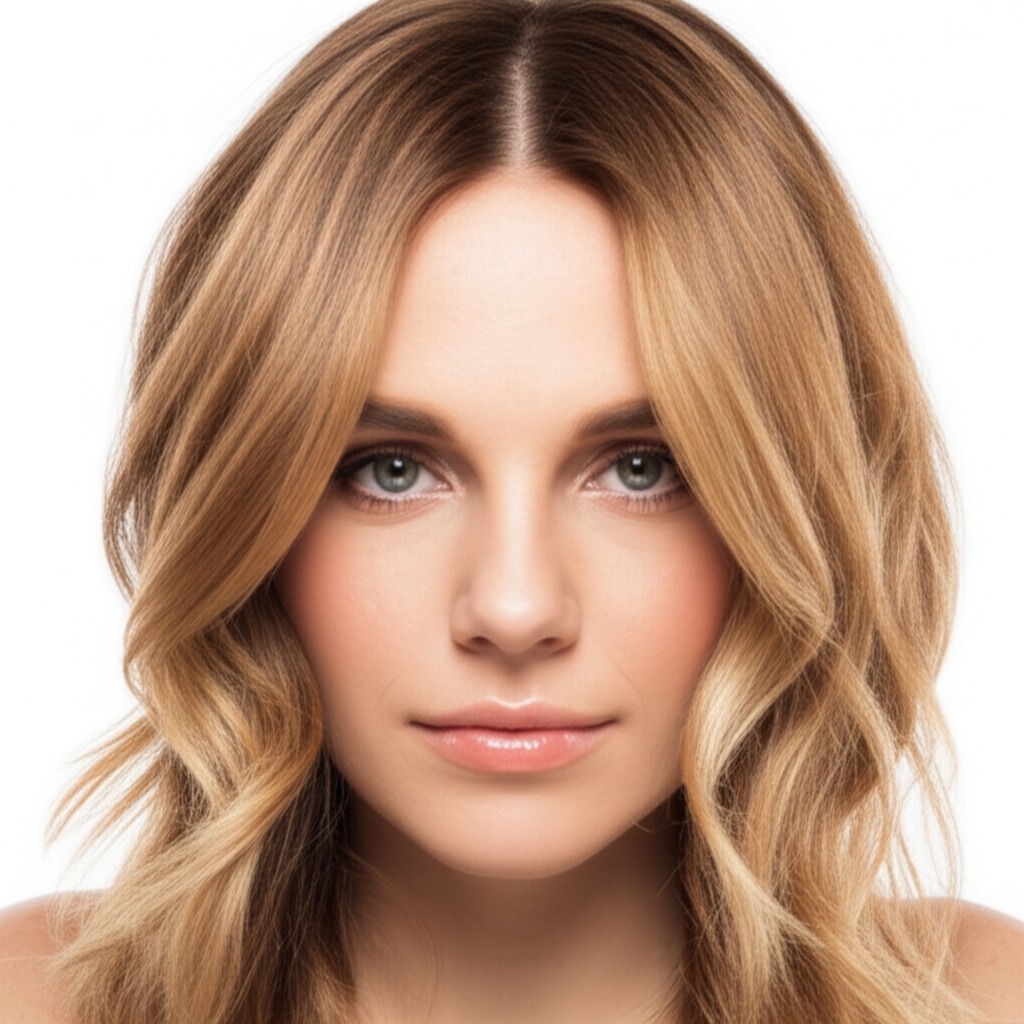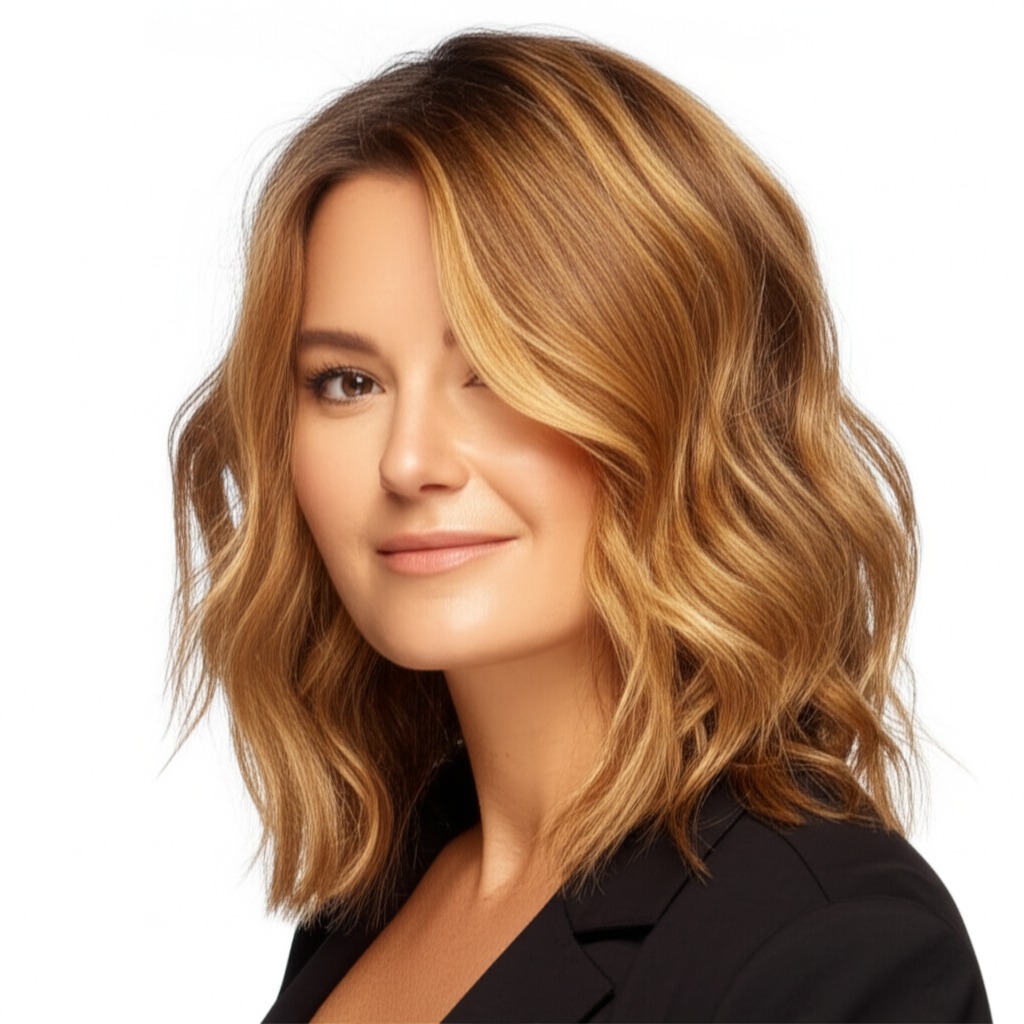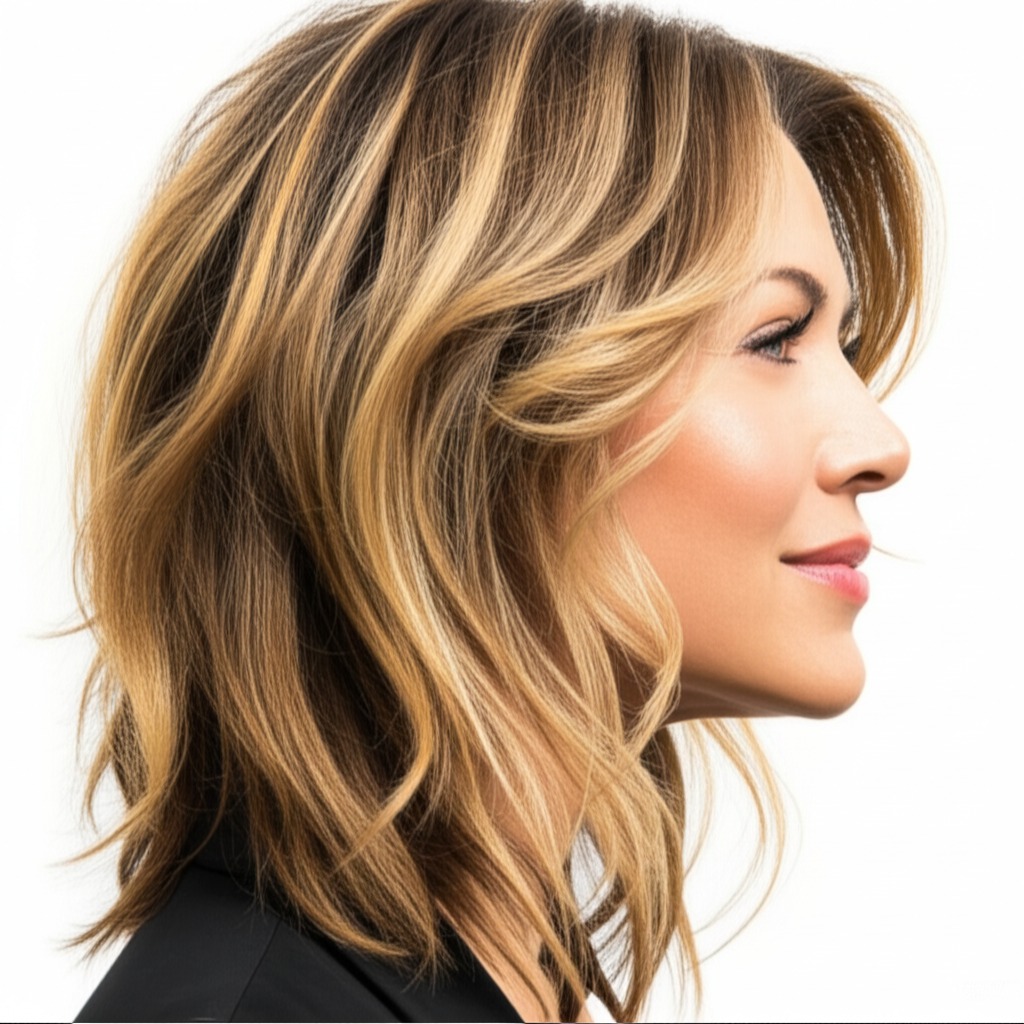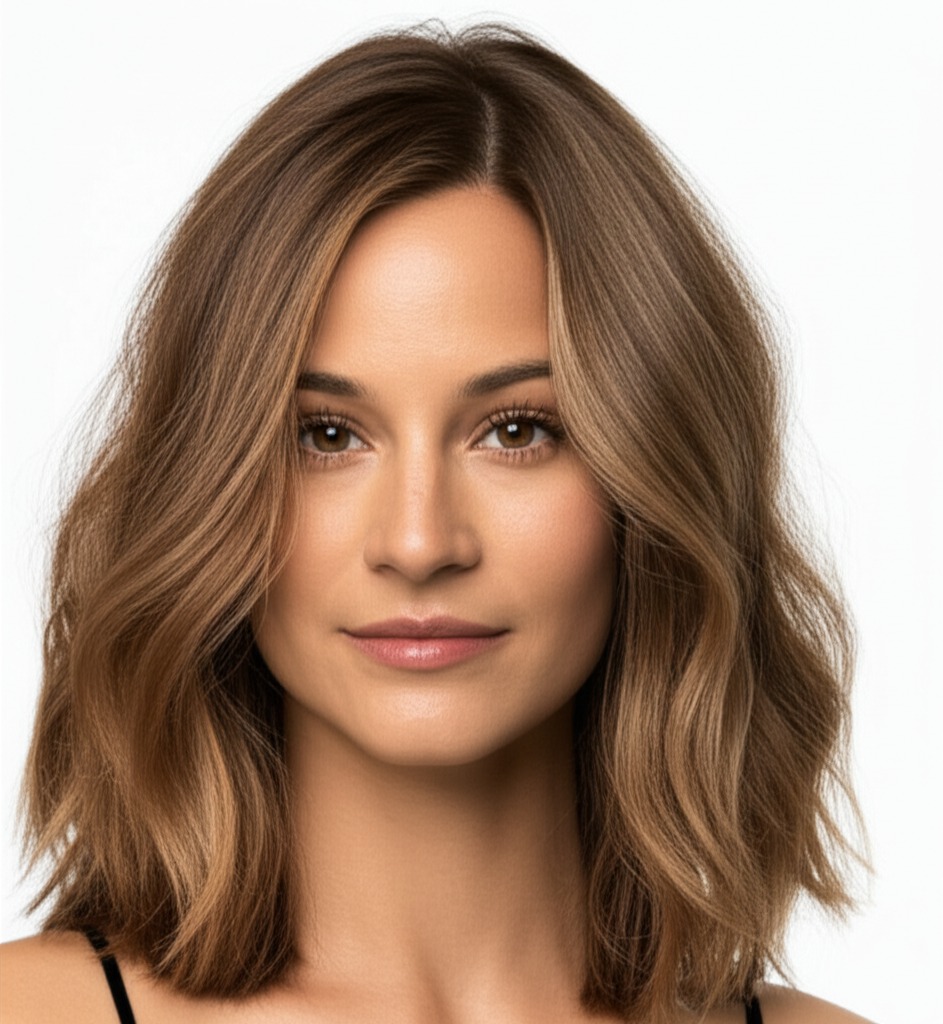#Honey Bronde: The Warmest of Welcome Changes
Honey bronde – it’s the hair color everyone's talking about! It blends the warmth of honey blonde with the richness of brunette, creating a gorgeous, dimensional look that feels both sophisticated and approachable. But what exactly is honey bronde? And more importantly, could it be right for you? Let’s break down everything you need to know.
#1. Defining Honey Bronde: Warmth & Depth
Honey bronde isn't just "blonde-ish brown." It’s a specific combination of tones and levels that create the desired effect. Understanding these details is key!
- Undertone: The dominant undertone in honey bronde is warm. Think golden, caramel, or even slightly copper hues. While some variations can lean neutral, true honey bronde always has warmth at its core. This warm base reflects light beautifully and gives a healthy glow to the hair.
- Depth (Levels): "Level" refers to how dark your hair is on a scale of 1-10 (with 1 being the darkest black and 10 being the lightest platinum). Honey bronde typically sits between levels 4 and 7, depending on your natural base color and desired lightness.
- Lower Levels (4-5): A deeper honey bronde will have more brunette richness, offering a subtle glow. It's often easier to achieve without significant lightening.
- Mid Levels (6-7): This is the "sweet spot" for many – a noticeable but not drastic change with beautiful dimension.
- Higher Levels (8+): While possible, achieving this requires more processing and may be less “honey” and more blonde in appearance.
#2. Who Does Honey Bronde Flatter?
Honey bronde is surprisingly versatile, but certain features make it particularly stunning.
- Skin Tone & Undertone: This color shines on those with warm or neutral skin tones. Think olive, tan, golden, or peachy complexions. The warmth in the honey bronde will complement these undertones beautifully. Those with very cool (pink or blue) skin may find it washes them out unless carefully balanced by a stylist.
- Eye Colors: Honey bronde enhances almost every eye color!
- Brown Eyes: The warm tones amplify their richness and depth.
- Green Eyes: The honey highlights bring out the golden flecks in green eyes, making them sparkle.
- Blue/Gray Eyes: A warmer honey bronde can add a touch of warmth to cool-toned eyes, creating a striking contrast.
- Natural Level Starting Points:
- Dark Hair (Levels 1-3): Requires significant lightening and is best achieved with highlights or balayage for the most natural result.
- Medium Brown Hair (Levels 4-6): Honey bronde can be achieved relatively easily, often with a single process color or strategically placed highlights.
- Light Brown/Dark Blonde Hair (Levels 7-9): A gloss or toner might be all that's needed to enhance existing warmth and achieve the honey bronde effect.
#3. Technique Options: Finding Your Perfect Blend
The technique your stylist uses is crucial for achieving the right look.
- Single Process: A uniform color application, best suited for those with naturally medium-brown hair who want a subtle enhancement of warm tones.
- Highlights/Lowlights: Adds dimension and depth. Strategically placed highlights brighten the overall tone, while lowlights add richness and contrast.
- Babylights: Very fine, delicate highlights that mimic natural sun-kissed strands – perfect for a soft, blended look.
- Gloss/Toner: Used to refine the color after lightening or to adjust existing tones. A honey gloss will enhance warmth; a bronze toner adds richness.
- Balayage-Effect vs Solid Color: Balayage (or painted highlights) creates a softer, more natural transition with less harsh lines and root contrast. A solid application offers even coverage but can look flat if not done correctly.
#4. Maintenance & Longevity: Realistic Expectations
Honey bronde isn't "set it and forget it." Here’s what to expect regarding upkeep.
- Wash Frequency: Aim for 2-3 washes per week using color-safe shampoo (more on that later!).
- Toner Refresh: Toners fade quickly! Expect a toner refresh every 6-8 weeks, depending on how much lightening was involved and your hair's porosity.
- Root Growth Pacing: The gradual root shadow is part of the beauty of honey bronde – it creates dimension! You can stretch out salon visits to 10-12 weeks between appointments.
- Budget/Time Planning: Honey bronde typically requires a moderate investment. A single process might cost $75-$150, while highlights or balayage could range from $150-$400+ depending on the complexity and salon location. Time commitment varies—a single process can take 1-2 hours; highlights/balayage often require 3-5+ hours.
#5. Seasonality & Pairing with Cuts: Style for Every Occasion
Honey bronde adapts beautifully to different seasons and hairstyles!
- Bob: A blunt bob looks chic and modern with honey bronde, especially when paired with face-framing highlights.
- Lob (Long Bob): The added length of a lob allows for more dimension and movement – perfect for showcasing the color's richness.
- Long Layers: Honey bronde truly shines on long layers, creating soft waves and highlighting the dimensional tones.
- Pixie Cut: A pixie cut can be surprisingly flattering with honey bronde, especially if face-framing pieces are highlighted to draw attention to the eyes.
- Seasonal Tweaks: Add warmer golden highlights for summer or richer bronze undertones for fall/winter.
- Event Picks: Honey bronde is versatile enough for work (especially a more subtle version), daytime outings, and even weddings – just adjust the intensity of the highlights accordingly!
#6. At-Home Care: Protecting Your Investment
Proper at-home care is crucial to maintaining your honey bronde’s vibrancy.
- Sulfate-Free Shampoo: Sulfates strip color fast. Invest in a sulfate-free shampoo specifically designed for colored hair.
- Clarifying Cadence: While sulfates are bad, product buildup can dull the color. Use a clarifying shampoo (but not too often – once every 4-6 weeks is usually sufficient).
- Heat Protection: Heat styling damages and fades color! Always use a heat protectant spray before blow-drying, straightening, or curling.
- Color-Safe Styling Tips: Opt for cool-toned styling products to prevent brassiness (more on that later!).
- Product Checklist: Sulfate-free shampoo & conditioner, color-safe leave-in conditioner, heat protectant spray, purple/blue toning mask (optional).
#7. Common Pitfalls: Prevention is Key
Let's address potential problems and how to avoid them.
- Brassiness: Warm tones can oxidize over time, leading to brassy or orange hues. Use a purple shampoo or toner mask once a week to neutralize these tones.
- Banding: Uneven color application (often due to inconsistent lightening) creates noticeable bands of color. A skilled stylist will blend the colors seamlessly.
- Patchiness: Insufficient saturation during coloring can result in patchy areas. Ensure your stylist applies the color evenly and thoroughly.
#8. Pros & Cons: Weighing Your Options
Pros:
- Versatile: Suits a wide range of skin tones, eye colors, and hair lengths.
- Dimensional: Creates depth and movement within the hair.
- Flattering: Adds warmth and radiance to the complexion.
- Approachable: Feels both sophisticated and down-to-earth.
Cons:
- Maintenance Burden: Requires regular toning and salon visits.
- Fade Risk: Warm tones tend to fade faster than cooler tones.
- Potential for Brassiness: Requires proactive measures to prevent unwanted orange/yellow hues.
#9. Salon Consultation Script: Setting Expectations
Prepare for your consultation with these prompts:
- "I'm interested in honey bronde, but I want a natural-looking result."
- "Can you show me examples of different honey bronde shades and techniques?"
- "What level are we aiming for, given my current hair color and desired lightness?"
- “How often will I need to come back for touch-ups or toner refreshes?”
- "What at-home products do you recommend to maintain the color’s vibrancy?"
#10. FAQs: Your Burning Questions Answered
- Can I achieve honey bronde on black hair? Yes, but it requires significant lightening and multiple sessions, potentially damaging your hair. A gradual approach with highlights or balayage is recommended.
- Will honey bronde make my hair look orange? Not if done correctly! The key is to balance the warmth with cooler tones and use a skilled stylist who understands color theory.
- How long does honey bronde last? The base color can last 6-8 weeks, while highlights/babylights may last longer (up to several months). Toner fades much faster.
- Is honey bronde damaging to my hair? Any lightening process has the potential to cause some damage. Proper care and minimizing heat styling are essential for maintaining healthy hair.
- Can I do honey bronde at home? While possible, achieving a professional-looking result is difficult without experience and proper tools. It’s best left to the pros!
- What if my hair turns brassy after getting honey bronde? Use a purple shampoo or toner mask once a week to neutralize unwanted yellow/orange tones.
With careful planning and consistent care, you can rock this beautiful, warm-toned color with confidence!


